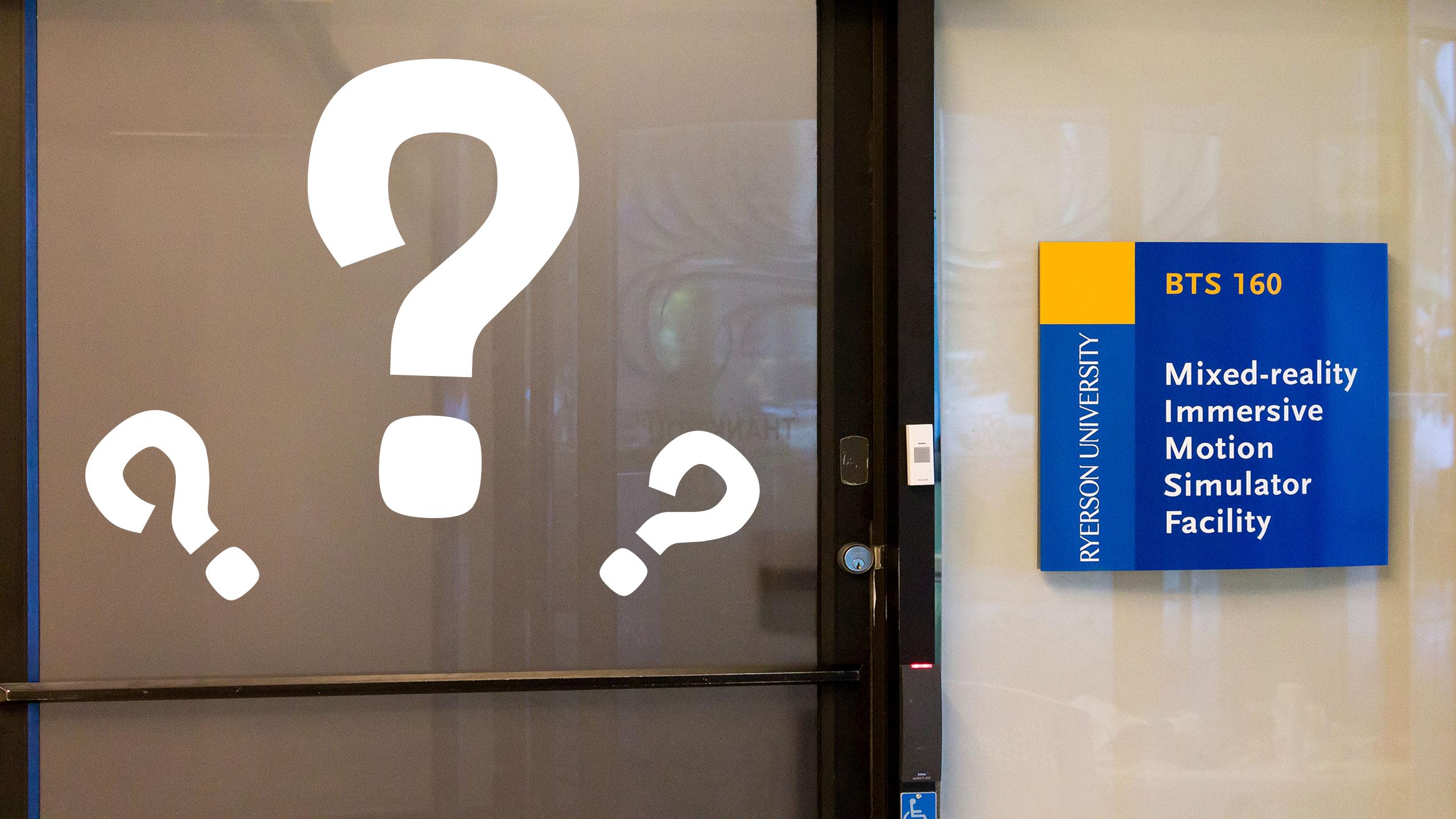Aaliyah Dasoo
The MaxFlight Full Motion Simulator—a one of a kind machine at Ryerson, has been broken for roughly the last six months, according to Hyeong-Uk Park, a research associate at the Mixed-Reality Immersive Motion Simulation (MIMS) Lab.
Before the machine broke, it was mainly used for demonstration to help other companies figure out the best user experiences in aircrafts for pilots and passengers. This ranged from how to layout an aircraft’s controls for maximum efficiency to increase pilot safety with ejection simulations. The simulations support supports numerous companies, such as Bombardier in Canada and Enterprise Manufacturing in South Korea.
The MIMS lab, founded in 2013, is located at 483 Bay St. (right between City Hall and the Eaton Centre), somewhat secluded from Ryerson’s main campus. The MaxFlight Simulator is the reason for the lab’s seclusion, Park said, as Ryerson did not have an adequate site at the time for the machine and the lab to accompany it.
As for its contribution to Ryerson, the MIMS lab focuses on different research areas under aerospace engineering, like developing a system to analyze flight test data, simplifying the human experience in aircrafts, and constructing a flight simulation lab. This is how they make use of the MaxFlight simulator.
According to Park, the simulator’s inverter broke when there was an increase in voltage that it wasn’t able to handle. As a safety measure, the machine turned off and now won’t turn back on.
Since then, the lab has been in the process of securing funding to replace it—and that funding will need to be big. According to FLYING, an aviation magazine, A full-motion simulator similar to the one in the MIMS lab starts at $57,000. Funds will mainly come from “grant-based proposal processes,” according to Aditya Venkatesh, a graduate research assistant at the MIMS Lab.
In the meantime, the MIMS team has been using its spare parts for research. “It’s not just sitting there and taking up space,” says Venkatesh. “Even though it’s out of commission, we’re still using it to do some other object recognition, some other types of research. It’s not just wasted space.”
According to MathWorks, a computer science and mathematics focused website, object recognition is a type of research that refers to computers learning the ability to find and identify objects from a video or photo, similar to the human eye.
Although the simulator is mainly used by the research team, it was purchased in partnership with the biomedical department at Ryerson. However, according to Venkatesh, the biomedical department, hasn’t used it recently and have only used it less than 100 times for research purposes.
He also says that he doesn’t find any large concerns with being away from the main campus, however, Venkatesh says that as a student looking for more information, it was “a completely online sort of process.” He says that although they are away from campus, when trying to expand their team they try their best to get the lab out there, even though it has been largely through word of mouth.
Often the solution is to go over to the main campus and talk about the lab themselves.
“There are very few students who say, ‘Hey, we saw you on your website!’ It’s more of us taking the initiative to go out and get them then them approaching us,” Venkatesh said. “But the funny thing is, every time someone walks through the door into the lab, their main thing is ‘Oh, this is a cool lab. You guys have fun equipment here. How did we not know about you guys?”











Leave a Reply